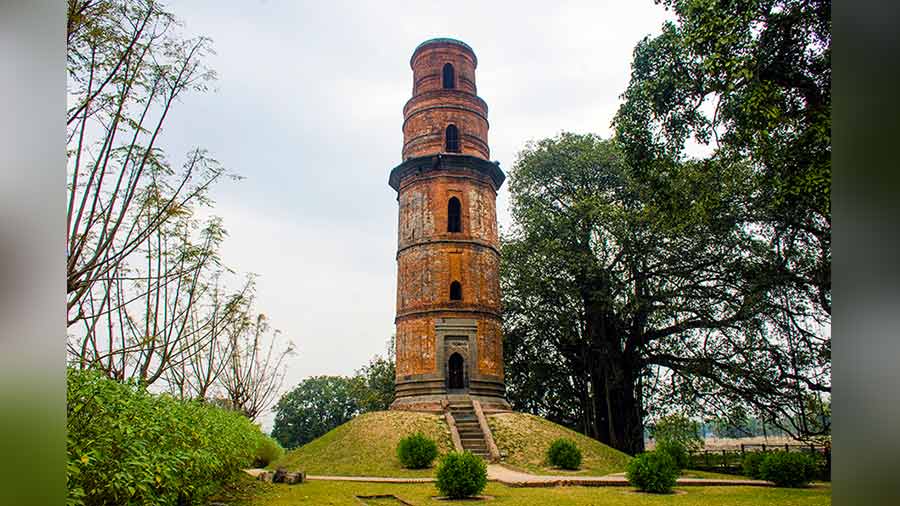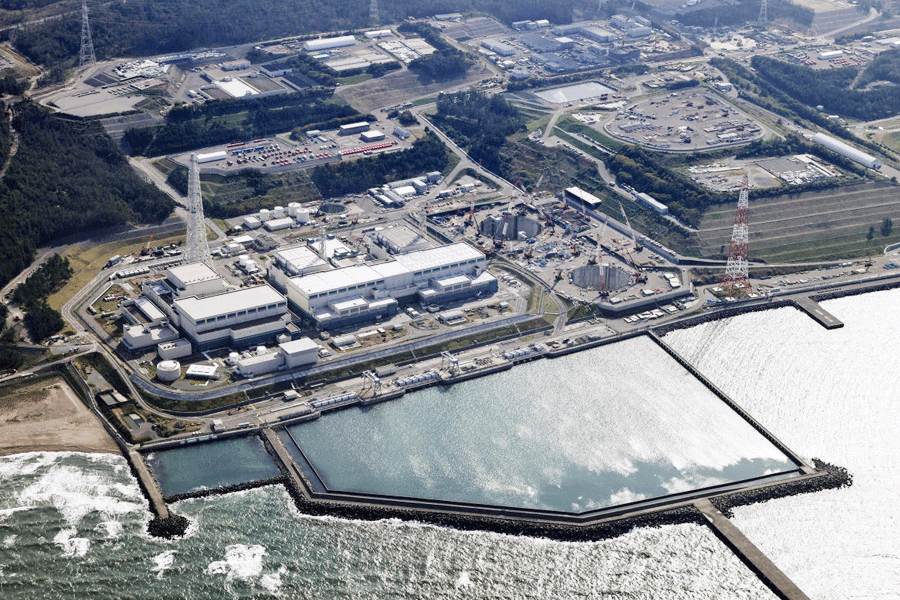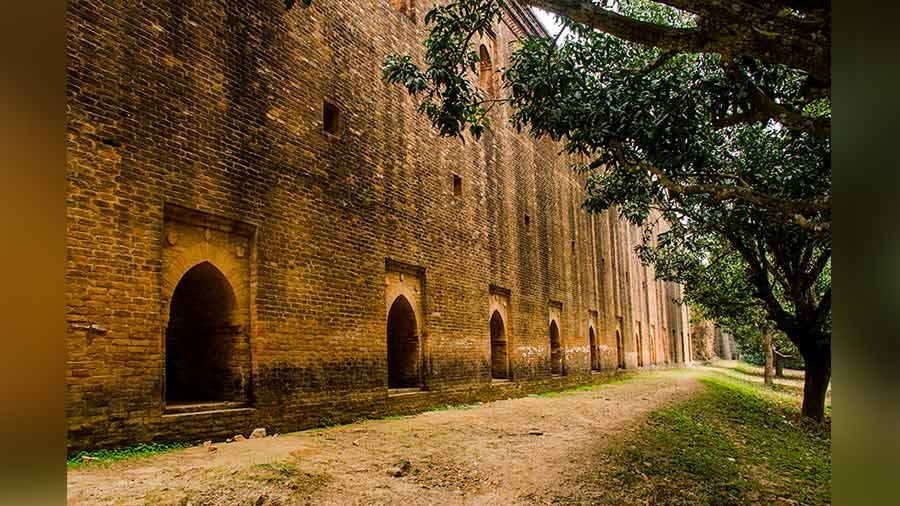
The citadel city of Gour in the district of Malda had served as the capital of Bengal from the 12th to the 16th century. Over the four centuries, Gour witnessed the rise and fall of many dynasties. Remnants of history still dot the rural landscape in the form of spectacular ruins like the Bais-Gazi Wall (in picture) which once protected the citadel of Gour. Now reduced to a fragment of what it used to be, the wall towers to a height of 66 feet, or 22 yards, hence the name. It was built by Barbak Shah, the Sultan of Bengal from 1459 to 1474
All images by Rangan Datta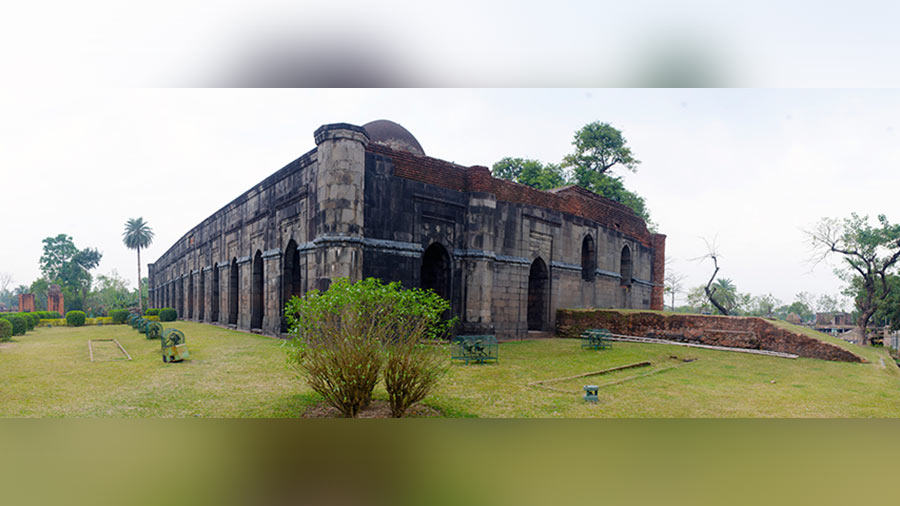
The Boro Sona Masjid, literally meaning the ‘big golden mosque,’ is one of the biggest and most spectacular of all Gour ruins. Built in 1526 by Nasiruddin Nasrat Shah, the mosque once had 44 domes of which only 11 stand to this day. The Boro Sona Masjid is also known as Baro Duary — a structure with 12 doors. Interestingly, despite the name, the mosque has only eleven arched doors on the eastern side

Two ornate stone pillars welcome visitors to the citadel city of Gour. Their structure and design bear a striking resemblance to the stone columns of Bora Sona Masjid. It is speculated that these pillars were once a part of the mosque, although nobody knows when or why they were removed from their original setting. They were probably later used to tie elephants and hence got named ‘hati bandha stambho’ by locals

About a kilometre south lies Ramkeli, a shrine dedicated to Mahaprabhu Chaitanya. Among the numerous ruins and monuments scattered across this historic city, this shrine happens to be the only active Hindu religious site. Rupa and Sanatana Goswami, two high officials of Sultan Husain Shah, became devotees of Chaitanya at this very place. A statue of Chaitanya and a small shrine mark the very spot where they met. Today, Ramkeli is quite the modern temple complex
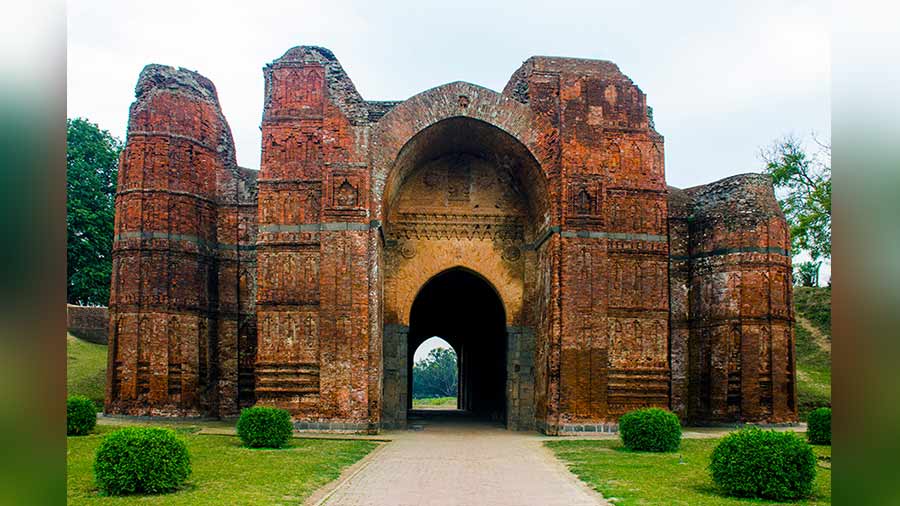
The Dakhil Darwaza is one of the three surviving gateways of the citadel of Gour. It is also known as Salami Darwaza, a name it earned owing to the gun salutes that welcomed guests into the citadel. The structure is a beautiful specimen of Indo-Islamic architecture with delicate terracotta work, consisting of floral and geometric designs, adorning the walls. Guard houses flank the brick-built arched gateway, and four towers mark the corners of the structure
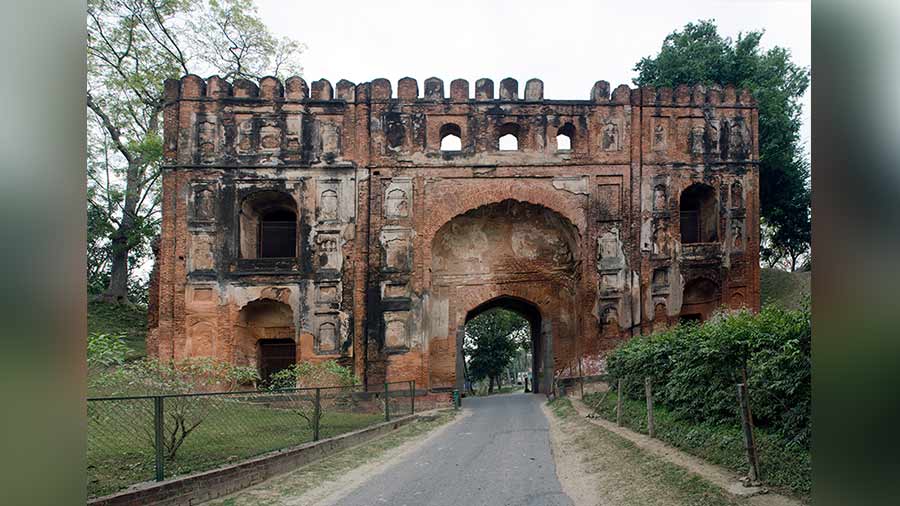
The Lukochuri Darwaza served as the royal entrance. Also known as Sahi Darwaza — the royal gate — the three-storied structure has a guard house and drum house. It was built in 1655, but the gate still has traces of the intricate stucco work. The entire outer surface of the gate was once covered with colourful enamelled tiles

The Tantipara Masjid derives its name from the Bengali word ‘tanti,’ meaning ‘weaver.’ Built between 1474 and 1480, the mosque is likely to have had a connection with the local weaver community. Tantipara Masjid boasts of some of the finest terracotta work among all the mosques in Gour. However, time has taken its toll on the structure as all of the 110 domes that once canopied the mosque have collapsed, as has a large section of the eastern wall

Theories abound about how the Chamkati Masjid got its name. Some suggest that ‘cham kati’ is an allusion to ‘skin cutters,’ the Muslim leather workers of the region. Others believe that the mosque owes its name to the word ‘chamkathi,’ which refers to the narrow entrance of the mosque. It was built by Shamsuddin Yusuf Shah in 1475

Ballal Bati was excavated in 2003 and has since then been an intriguing addition to the list of Gour ruins. To date, nothing is known about the origin of the structure. Some opine that it is a part of the royal palace of the Sen Dynasty, while others believe it to be a Buddhist stupa dating back to the Pala dynasty
